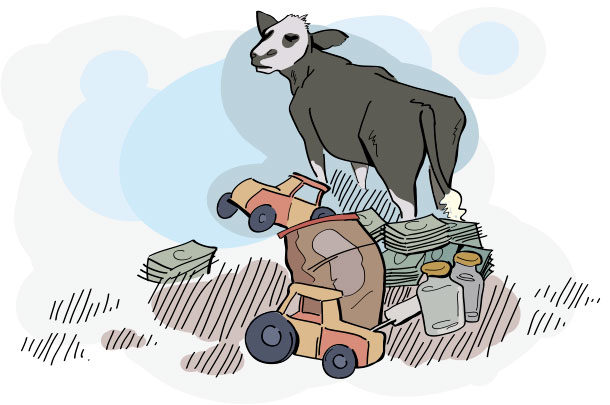But wait, now that you are on the hook for this added input to your operation, you need to have equipment to apply the miracle ingredient. Also, the few cents per head per day to “solve all your problems” only covers the cost of the agent itself. The added agent must be mixed with other ingredients, so it is still only a few cents per day, but now it’s just a few cents more per day than what we started with originally.
What happens if we decide to stop using the miracle cure that we just purchased if the price goes up and we decide we can’t do it anymore? Well, if you don’t stay on it, your problem will come back. Anybody seeing a problem here? One, you are now dependent on a higher cost of production, and two, you didn’t solve any problems, you just treated a symptom. If the problem was solved, you could wean yourself from this miracle product, the added equipment expense and the increased complexity to your daily operation. “Impossible!” say the academics and the dealers of the miracle cure.
What if we dared to ask the questions, “Why did I ‘need’ this miracle product to start with?” and “Is there something in my management that caused this situation?” Generally, when we analyze our production practices, we can find ways to cut expense or justify expense. There are justifiable expenses, and they will be different for each outfit. There are also expenses that are direct results from conscious management choices – maybe not poor choices, but simply ones that suit your personal goals for your life. For instance, I once had a rancher say that truck payments were really hurting their bottom line. As the conversation continued, he stated that he really liked having new trucks for him and his wife to drive, as comfort and being under warranty were things he really liked. By the end of the conversation, he finally realized this was a personal decision on how he wanted to operate, not how he needed to operate. We all have things that we do out of convenience or a personal desire in operations, but let’s not fool ourselves into believing that we need to do these things.
We also must analyze the cost of decisions made for non-business reasons. Back to our miracle ingredient scenario. This particular person was having high levels of sickness in his weaned calves when the salesman entered and convinced him of his need for the miracle ingredient, the ingredients to accompany said miracle and the equipment to distribute said miracle. His sickness did decrease in almost direct proportion to the amount his expense increased. After being addicted to these added inputs for several years, he noticed that his neighbor didn’t use the miracle and didn’t have the same sickness problems. It turns out poor pre-weaning management was the cause of the sickness. With a few minor changes to management, the “need” for the added miracle inputs went away. Sickness decreased, as did cost. Which was more profitable? The quick fix that treated the symptom with added inputs or the long-term solution that required a change in management practices?
Obviously, we need to treat symptoms when they arise, and there certainly are inputs that are beneficial for the long term, but we must always seek to solve and eliminate the underlying issue that results in the symptom. The next time we are confronted with adding another input into the operation, let’s stop to determine if we are falling for a quick and easy fix or if it would be better to seek out the source for a long-term solution. One will take us in the direction of decreased profits and instability; the other will move toward increased profit and sustainability. Which direction are you headed? ![]()
ILLUSTRATION: Illustration by Corey Lewis.

-
Bill Whitehurst
- Makale Livestock
- Whitehall, Montana
- Email Bill Whitehurst







